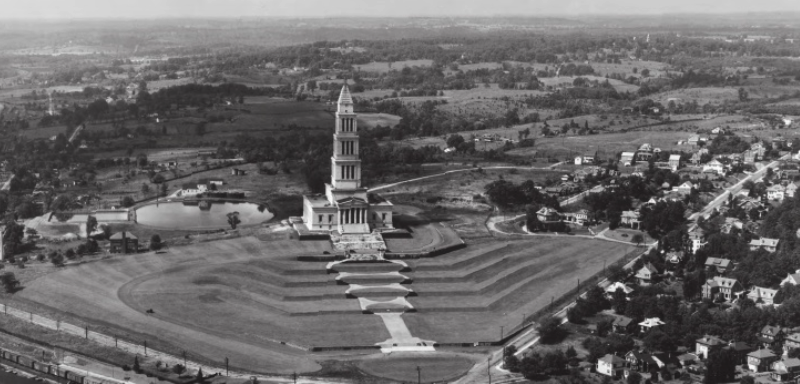Architecture

The Memorial’s form was inspired by the lighthouse of Alexandria, Egypt, one of the ancient Seven Wonders of the World, and its design reflects the classical architecture of Greece and Rome. These styles connect the Memorial to the architecture of Washington’s day, when the classical aesthetic was used to express the democratic principles guiding the new republic. The Memorial’s entrance, inspired by the Parthenon, is of the Doric order. The interior of Memorial Hall is a of modernized Composite order. The three sections of the tower ascend in levels of complexity, with Doric features at the bottom, Ionic in the middle, and Corinthian at the top. The Tower is capped with a pyramid and surmounted by a stylized finial that symbolizes Light. The Memorial is a beacon that spreads the Light of Freemasonry and the legacy of Washington to all humanity.
Landscape Architecture
The landscaping of the Memorial grounds was done by the renowned Olmstead Brothers firm. Founded by Frederick Law Olmsted—who designed the grounds of the United States Capitol in Washington, D.C., New York City’s Central Park, the Biltmore Estate in North Carolina, and the 1893 World’s Columbian Exposition in Chicago—the Olmsted Brothers remained influential for more than a century. The grounds of the Memorial were specifically designed by an Olmsted employee named Carl Rust Parker, one of the most renowned American landscape architects and a member of the Masonic Fraternity.


